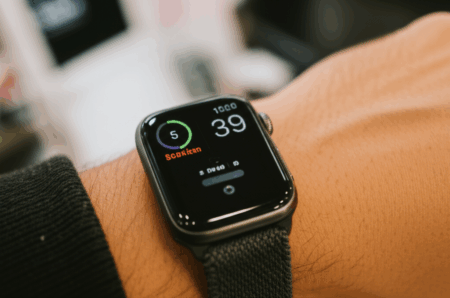SCHAFFHAUSEN, Switzerland – Garmin Ltd. (NYSE: GRMN) has announced record consolidated revenue for the third quarter of 2025, driven significantly by the booming market for wearable fitness technology. The company reported approximately $1.8 billion in consolidated revenue, marking a 12% increase compared to the prior year quarter. This robust performance underscores the continued strong consumer interest in health and fitness monitoring devices.
Garmin’s operating income for the third quarter reached a record $457 million, a 4% increase over the previous year, with gross and operating margins standing at 59.1% and 25.8%, respectively. The company’s strong financial results were propelled by double-digit revenue growth in key segments, most notably a substantial 30% increase in its fitness segment.

The Driving Force: Advanced Wearables and Strategic Product Launches
The surge in Garmin’s fitness segment revenue, reaching $601 million from $464 million in the prior year, is primarily attributed to strong demand for advanced wearables. Garmin capitalized on this trend with several new product introductions during the quarter. These include the Edge® 550 and Edge 850 cycling computers, which offer enhanced coaching plans and cycling metrics. The company also unveiled the Bounce™ 2 smartwatch for kids, featuring voice calling, messaging, and geofencing alerts, and the Venu® 4 smartwatch, boasting a premium all-metal design, a built-in flashlight, and numerous new health and wellness functionalities. Additionally, Garmin launched the fēnix® 8 Pro series, its first smartwatch to integrate satellite and cellular connectivity.
Cliff Pemble, President and CEO of Garmin Ltd., highlighted the strength of their diversified business model and expressed confidence in their product lineup for the upcoming holiday selling season.
Innovation in Health and Fitness Tracking
Garmin’s success is a microcosm of a larger trend in the wearable technology market, where health and fitness-based sensors are driving significant innovation. Advanced sensors capable of ECG, blood oxygen, and sleep monitoring are becoming more accessible across various price ranges, making wearables indispensable for health-conscious consumers. This technological advancement shifts wearables from mere data tracking tools to holistic health and wellness coaches, enhanced by features like personalized recommendations and health scoring, often powered by generative AI.

Broader Wearable Technology Market Trends
The global wearable technology market is experiencing substantial growth, with estimates placing its value at approximately $84.2 billion in 2024, projected to reach $186.14 billion by 2030, at a compound annual growth rate (CAGR) of 13.6% from 2025 to 2030. Other forecasts suggest the market could reach $200.75 billion by 2033, with a CAGR of 13.58% from 2025-2033. The increasing consumer demand for health tracking, coupled with advancements in sensor technology and expanding healthcare applications, are key drivers.
Key Market Segments and Growth Drivers
The wrist-wear segment, encompassing smartwatches and fitness trackers, holds the largest market share, exceeding 58% in 2024. This dominance is fueled by the growing popularity of devices that offer not just communication but also comprehensive health monitoring, calling, and music control. North America leads the wearable technology industry, holding over 34% of the market share in 2024, driven by rising health concerns and fitness awareness.
The fitness tracker market specifically is also experiencing rapid expansion. Valued at $62.03 billion in 2024, it is projected to grow to $290.85 billion by 2032, with a robust CAGR of 22.1% from 2025 to 2032. This growth is further propelled by increasing disposable income and expenditure on wearable technology.
The Role of AI and IoT in Wearables’ Future
The future of wearable technology is increasingly intertwined with the integration of artificial intelligence (AI), the Internet of Things (IoT), and cloud computing. These technologies empower devices to deliver personalized insights and predictive health analytics. Generative AI, in particular, is revitalizing wearable devices by enabling advanced features like health scoring, personalized recommendations, and conversational virtual assistants, transforming them into more comprehensive health and wellness coaches. The proliferation of 5G technology also enhances data transfer and connectivity for wearables.

Garmin’s Outlook for 2025
Following its strong performance, Garmin has updated its full-year 2025 guidance. The company anticipates revenue of approximately $7.10 billion and pro forma earnings per share (EPS) of $8.15. This revised outlook reflects continued confidence in the company’s growth trajectory and its ability to innovate within the dynamic wearable technology market. Garmin expects its Fitness segment revenue to grow by 29% for the year, alongside significant growth in the Aviation (18%) and Marine (20%) segments. The company ended the quarter with a strong financial position, including approximately $3.9 billion in cash and marketable securities.
As the wearable fitness tech market continues its upward trajectory, companies like Garmin, with their focus on innovation and diversified product offerings, are well-positioned to meet the evolving demands of health-conscious consumers.







